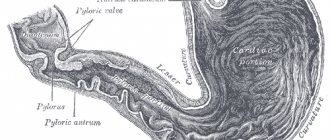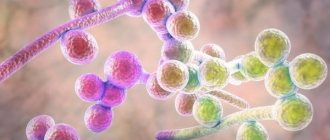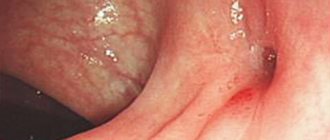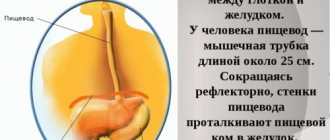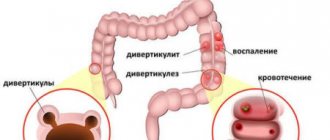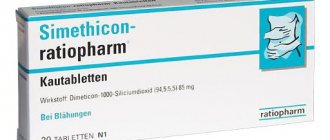What material is used for histology?
The objects of study are particles of skin, mucous membranes, and soft tissues (breast glands, thyroid gland). In some cases, a smear of epithelial cells is examined and analyzed. The following biopsy sampling techniques are used:
- puncture biopsy;
- surgery with removal of an organ/resection of its parts;
- endoscopic screening with taking biopsy material from the area of abnormal development.
- smears (gynecology, urology)
Depending on the type of examination, biopsy can be collected in different ways - using a special needle, scalpel, endoscopic forceps or sampling brushes.
Histological examination of biopsy material
Histological examination of biopsy material is a mandatory stage of a comprehensive examination if a neoplasm is detected in the patient. Such a study will help determine its nature: benign or malignant, in order to create a complete treatment regimen based on the information obtained.
The technique involves a microscopic examination of a tissue sample collected from the patient’s problem area. Biological material is obtained for conducting a control section through a classic biopsy or during surgery. The procedure is prescribed even when a person has consulted a doctor regarding excision of a standard papilloma.
Why is this necessary?
Taking material for testing is necessary to solve several problems. Often the method is used to confirm or refute a previously established preliminary diagnosis. But this is not the only case when histology cannot be avoided.
All cancer centers use it to find out what stage of development the tumor is at.
This kind of monitoring is also carried out on a regular basis to monitor the dynamics of the pathological process.
Technology cannot be avoided at the preliminary stage of planning a surgical intervention to remove a previously found tumor. The results of the study act as a kind of compass during the operation.
- Why is this necessary?
- How does this happen
- Approximate results
The test is also needed for classical differential diagnosis. It is aimed at accurately separating two pathologies that are similar in all respects. Comparison at the microscopic level will be especially relevant when metastases are identified.
The final popular reason for using the measure is to determine the structural disorder that forms in the tissues over the entire period of treatment.
The modern treatment regimen in oncology clinics necessarily includes many aspects of complex recovery. We are talking about radiation and chemotherapy. But not a single oncology drug will be prescribed without the doctor receiving the results of a histological examination.
Mythological analysis allows you to select the optimal set of drugs and auxiliary healing measures from the first call.
This means that a person will not have to take all the medications for about a month in order to then see how well the body responded to the scattered drug support.
Histology will tell you which medications will be the most effective, even if the victim is not a victim of tumor processes. The approach is in high demand in thoracic and abdominal surgery.
It is also actively used by experts from the field:
- gastroenterology;
- gynecology;
- pulmonology;
- otorhinolaryngology.
Moreover, the information summary obtained in this way is equally widely used for subsequent treatment of both men and women. We are talking about restoring the reproductive system, as well as treating the cervix among the fairer sex and returning testicular functionality among the powerful.
How does this happen
If the victim has a tumor confirmed, but its features have not yet been fully understood, then he is prescribed to undergo intravital histology. Moreover, for the laboratory technician it is practically all the same from which part of the body the biological material will be extracted, as long as it is the affected area and the surgeon can get enough damaged cells.
To implement this plan, several biopsy formats are used, depending on the current capabilities of physicians and the needs of a particular consumer:
- excision;
- puncture;
- cut from a removed organ;
- forceps;
- aspiration;
- curettage
In most cases, doctors are limited to the first option, since it involves obtaining the required amount of tissue during excision, when a general operation is performed. The puncture version is no less common in medical practice. It is characterized by puncture of the pathological focus using a needle, with the help of which a piece of problematic tissue is removed.
The forceps offer is nothing more than the usual biting of the desired part of the pathological formation with special tweezers - hence the self-explanatory name. A forceps solution is used for joint endoscopy such as:
- esophagogastroduodenoscopy;
- colonoscopy;
- bronchoscopy.
If the problem area turns out to be a cavity, then you cannot do without using a syringe to suction the liquid formed in the hollow part or the secretion produced by the gland.
The final variation is called curettage. They resort to it if it is necessary to scrape out a potential lesion from organs with cavities, or directly from cavities that have formed as a result of a malignant process.
The doctor decides how the biopsy will be collected at the stage of preliminary discussion with his ward. To make the final decision, the individual characteristics of the subject’s body and the expected location of inflammation are taken into account.
Only an experienced doctor should carry out a control section, since if the rules for collecting material are not followed in the future, there is a high probability of obtaining a result with large errors. In the best case, the collection will have to be repeated, and in the worst case scenario, the oncologist may not notice the problem at all.
You should not be afraid of situations where the treating specialist insists that histology should be carried out by a pathologist. It is he who specializes in a given area of research.
Sometimes he is even invited to the operation itself, and not just to the consulting stage.
A qualified pathologist will indicate the exact location for collecting tissue samples, and will also recommend the safest method of fixation, suggesting the exact volume of cells to measure.
If a small lesion is found in the victim, then it is cut off entirely, and additionally covers healthy surrounding tissue of about one centimeter.
When an operation involves the removal of a benign neoplasm, then surgical intervention implies a radical measure.
In such a scenario, doctors are obliged to take into account the possible aesthetic effect.
Sometimes it is not possible to remove the entire formation. Then the volume of the neutralized sample should be as large as possible, and tissue should be cut off where the pathology is most clearly visible.
Also, the doctor must always keep in mind the risks of injury to the stomach or any other area being studied.
A real professional will try to make sure that the area of the healthy part of the organ remains as untouched as possible, and the actions taken do not change the structure of the sample itself.
If an electric knife is involved in the work, then the cutting line should be at least 2 millimeters before the main point of injury. The collected material should be handled with care, avoiding touching with fingers or being crushed by associated medical instruments. It is allowed to hold the sample only by the fabric strip.
Another important stage of cell collection is the correct documentation. The clinician is obliged not only to correctly label the biopsy specimen, but also to enter all the necessary information into the protocol about the type of operation performed, as well as fill out a description of the removed part of the organ.
The laboratory technician should ensure that the patient's initials are written carefully along with the address. On the same document, a note is made regarding the localization of the pathology, the connection of the obtained material with others:
- organs;
- ligaments;
- muscles.
To ensure that the collected tissue can successfully survive transportation to the research department, the material is dipped into a fixative solution.
It should also be taken into account that in its original form the material cannot be stored for a long time due to the fact that it dries quickly, distorting the reliability of the clinical picture.
The smallest samples, which very quickly lose accumulated moisture, were the first to be at risk.
Not everything is perfect if the sample turns out to be too large. To allow formalin to pass through, the medical staff must make small incisions. Here there is a risk of spoiling the workpiece due to the fact that an incorrectly made cut can significantly disrupt the original structure of the fibers, which will distort the effectiveness of the test.
Because of this, pros never make through cuts, and also always limit themselves to one or two cuts. For the same reason, it is prohibited to divide the material in order to send it to several laboratories at the same time.
The explanation for this is the heterogeneity of the tumors, which is why sections from different places will be unequal in homogeneity. This can interfere with the correct choice of treatment tactics.
Results, depending on the type of tumor, are usually ready within five days to two weeks. The longest wait is when submitting a bone normality test.
Histological examination
Histological examination is a morphological examination of tissues and organs of a sick person, including a biopsy and examination of surgical material. A biopsy is a morphological study of pieces of tissue taken from a patient for diagnostic purposes.
The study of surgical material is a morphological study of tissues and organs removed from a patient during a surgical operation performed for therapeutic purposes.
Histological or pathomorphological examination is the most important in the diagnosis of malignant tumors, one of the methods for assessing drug treatment.
What types of biopsies are there?
Biopsies can be external or internal. External biopsies are biopsies in which material is taken directly under “eye control.” For example, biopsies of skin and visible mucous membranes. Internal biopsies are biopsies in which pieces of tissue for examination are obtained using special methods.
Thus, a piece of tissue taken by puncture using a special needle is called a puncture biopsy , a piece of tissue taken by aspiration is called aspiration biopsy , by trephination of bone tissue is called trepanation .
Biopsies obtained by excision of a piece during dissection of superficial tissues are called incisional, “open” biopsies .
For morphological diagnostics, targeted biopsies , in which tissue is collected under visual control using special optics or under ultrasound control. Material for biopsy examination should be taken at the border with unchanged tissue and, if possible, with the underlying tissue.
This primarily applies to external biopsies. You cannot take pieces for biopsy from areas of necrosis or hemorrhage. After collection, the biopsy and surgical material must be immediately delivered to the laboratory; if delivery is delayed, it must be immediately recorded.
The main fixative is a 10-12% formaldehyde solution or 70% ethyl alcohol, and the volume of the fixative liquid should be at least 20-30 times the volume of the object being fixed.
When sending material for pathomorphological examination, most often tumor tissue, lymph nodes, it is necessary to make a smear for cytological examination before fixation.
Depending on the timing of the response, biopsies can be urgent (“express” or “cyto” biopsies) , the response to which is given in 20-25 minutes, and planned , the response to which is given in 5-10 days. Urgent biopsies are performed during surgery in order to resolve the issue of the nature and extent of surgery.
The pathologist, conducting the examination, produces a macroscopic description of the delivered material (size, color, consistency, characteristic changes, etc.
), cuts out pieces for histological examination, indicating which histological techniques should be used.
Examining the prepared histological preparations, the doctor describes the microscopic changes and conducts a clinical and anatomical analysis of the detected changes, as a result of which he makes a conclusion.
Biopsy results
The conclusion may contain an indicative or final diagnosis, in some cases only a “descriptive” answer. The approximate answer allows you to determine the range of diseases for differential diagnosis.
The final diagnosis of the pathologist is the basis for formulating a clinical diagnosis. A “descriptive” answer , which may occur when there is insufficient material or clinical information, sometimes allows us to make an assumption about the nature of the pathological process.
In some cases, when the sent material turns out to be scanty and insufficient for a conclusion, while the pathological process may not have been included in the piece being examined, the pathologist’s conclusion may be “false negative” .
In cases where the necessary clinical and laboratory information about the patient is missing or is ignored, the pathologist’s response may be “false positive” .
In order to avoid “false negative” and “false positive” conclusions, it is necessary, together with a clinician, to conduct a thorough clinical and anatomical analysis of the detected changes with a discussion of the results of the clinical and morphological examination of the patient.
Cost of a biopsy in our medical center
| Study title | Clinical material | Expiration date | Price |
| Biopsy of 1st category of complexity without additional research methods | surgical material: anal fissure; hernial sac with a non-strangulated hernia; gallbladder with non-destructive forms of cholecystitis or injury; wall of the wound canal; tissue of the fistula tract and granulation; ovaries without a tumor process in breast cancer. | 10 w.d. | 1900.00 rub. |
| Biopsy of 2nd category of complexity without additional research methods | surgical material: allergic polyp of the paranasal sinuses; vessel aneurysm; varicose veins; inflammatory changes in the uterine appendages; hemorrhoids; ovarian cysts – follicular, corpus luteum, endometrioid; fallopian tube during tubal pregnancy; sclerocystic ovaries; scrapings during uterine pregnancy with artificial and spontaneous abortions; endometriosis internal and external; fragments of blood vessels after plastic surgery; tonsils (for tonsillitis), adenoids; epulids. | 10 w.d. | 1900.00 rub. |
| Biopsy of 3rd category of complexity without additional research methods | surgical material: prostate adenoma (without dysplasia); benign tumors of different localization of clear histogenesis; malignant tumors of different localization of clear histogenesis with invasion and metastasis into the lymph nodes; placenta; polyps of the cervical canal, uterine cavity (without dysplasia); serous or mucinous ovarian cyst; fibroadenoma of the mammary gland and fibrocystic mastopathy (without dysplasia) | 10 w.d. | 1900.00 rub. |
| Biopsy of 4th category of complexity without additional research methods | biopsies of the esophagus, stomach, intestines, bronchus, larynx, trachea, oral cavity, tongue, nasopharynx, urinary tract, cervix, vagina. | 10 w.d. | 2000.00 rub. |
| Biopsy of 4th category of complexity without additional research methods | surgical material: borderline or malignant tumors of the lungs, stomach, uterus and other organs that require clarification of histogenesis or the degree of dysplasia, invasion, stage of tumor progression; when the tumor grows into surrounding tissues and organs. | 10 w.d. | 2000.00 rub. |
| Biopsy of 4th category of complexity without additional research methods | surgical material of the cervix for dysplasia and cancer. | 10 w.d. | 2000.00 rub. |
| Biopsy of 4th category of complexity without additional research methods | scrapings of the cervical canal, uterine cavity for dysfunction, inflammation, tumors. | 10 w.d. | 2000.00 rub. |
| Biopsy of 5th category of complexity without additional research methods | immunopathological processes: vasculitis, rheumatic, autoimmune diseases | 10 w.d. | 2990.00 rub. |
| Biopsy of 5th category of complexity without additional research methods | tumors and tumor-like lesions of the skin, bones, eyes, soft tissue, mesothelial, neuro-ectodermal, meningovascular, endocrine and neuro-endocrine (APUD-system) tumors. | 10 w.d. | 2990.00 rub. |
| Biopsy of 5th category of complexity without additional research methods | tumors and tumor-like lesions of hematopoietic and lymphatic tissue: organs, lymph nodes, thymus, spleen, bone marrow. | 10 w.d. | RUB 2870.00 |
| Biopsy of 5th category of complexity without additional research methods | puncture biopsy of various organs and tissues: mammary gland, prostate gland, liver, etc. | 10 w.d. | 1420.00 rub. |
| Additional research methods | |||
| Detection of Helicobacter pylori (Gram stain) | 10 w.d. | 2540.00 rub. | |
| Additional production of microslides | 10 w.d. | 2540.00 rub. | |
| Restoration of delivered finished drugs | 10 w.d. | 2540.00 rub. | |
| Photo registration (1 photo) | 10 w.d. | 1890.00 rub. | |
| Advisory review of finished microscopic slides | 10 w.d. | 2540.00 rub. |
r.d. - working day
Source: //rammedic.ru/biopsii.html


